Palace of the Nation, the place where Belgian independence was forged
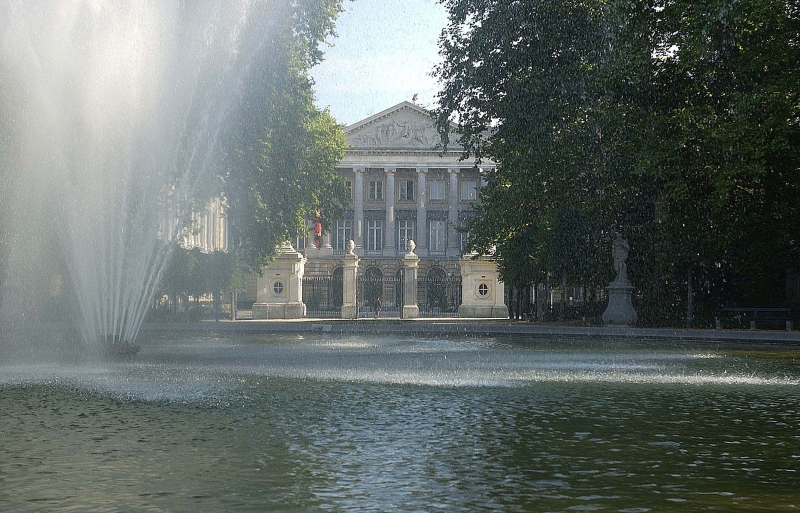
Across the north gate of the Brussels Park along Rue de la Loi stands the majestic Palace of the Nation, the birthplace of Belgian independence.
It was in this very building that the first government and legislature of Belgium convened in 1830 to lay the foundations for a sovereign Belgian state.
Since then, the palace has been the seat of the Belgian Senate and Chamber of Representatives. But before it became a legislative building, it was actually a courthouse.
The palace dates back to 1783 when Belgium was still part of the Duchy of Brabant ruled by the Austrian Habsburgs. It was originally built for the Sovereign Council of Brabant, the supreme court of the duchy.
When the French took over Belgium in 1794, the former Palace of the Council of Brabant continued functioning as a court building.
The palace was transformed into a parliament building in 1815 when the Dutch came to power. It became the Palace of the States General of the United Kingdom of the Netherlands.
After the Belgian Revolution of August 1830, a provisional government led by Charles Rogier began meeting at the palace. The government set up a national assembly which drew up the first Belgian constitution.
Within the halls of the palace, Belgium was solemnly declared a sovereign and independent state with a constitutional monarchy on November 18, 1830.
However, Belgian independence is celebrated on July 21 because it was on that day in the year 1831 that Leopold I, the first King of Belgium, was crowned.
That same year, Palais de la Nation or Palace of the Nation became the official name of the building that bore witness to the country’s bid for independence.
Today, the palace is where the most powerful Dutch-speaking and French-speaking leaders of Belgium spend most of their days fighting over how to run their country. It’s a bastion of democracy after all.
Unfortunately, the building is not that accessible to the public. According to the federal parliament’s website, you may have to book a visit at least four months in advance to get a slot.
But since we’re celebrating Belgian independence today, Brussels Express is here to let you in on the historical, architectural, and artistic secrets lurking within the Palace of the Nation.
Ready? Let’s begin our tour.
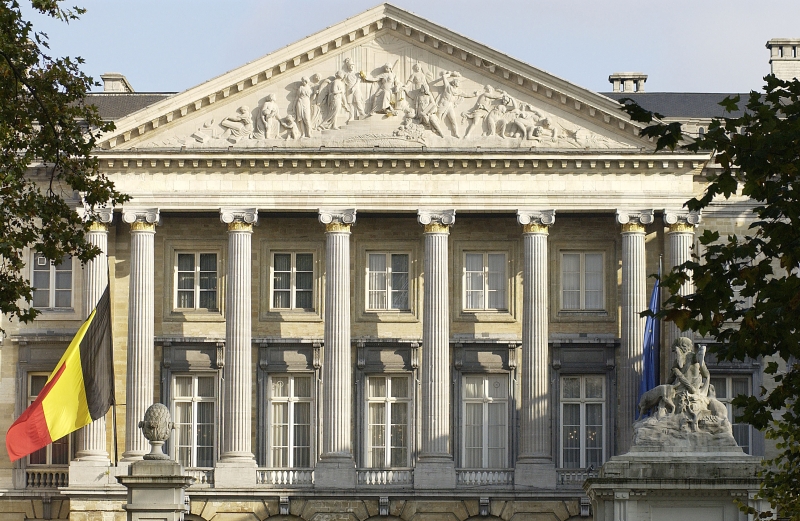
1. Facade
We’re standing in front of the palace. There’s a central structure which extends to the left and to the right. The left wing is assigned to the Senate and the right wing is for the Chamber of Representatives.
The building’s exterior was designed by French architect Gilles-Barnabé Guimard in 1779. It was fashioned after the neoclassical tradition of the time which sought to revive early Greco-Roman architecture.
Typical of neoclassical architecture, columns adorn the main facade of the palace. Above the eight columns rests a triangular bas-relief by Belgian sculptor Gilles-Lambert Godecharle.
The bas-relief depicts Lady Justice punishing the Vices and rewarding the Virtues. It was the chosen theme for a building that was initially intended for judicial functions.
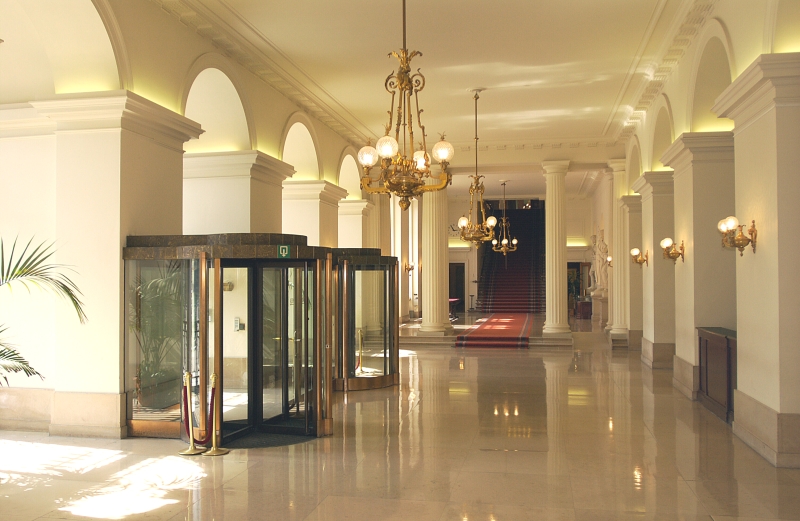
2. Peristyle
We now enter the building and find ourselves in the peristyle, architectural term for a lobby surrounded by columns and pillars.
Designed by Philippe-Jérôme Sandrié, the peristyle spans the entire width of the facade and remains in its original form.
On both sides of the peristyle, you will see a monumental staircase. The left staircase is dressed in red and leads to the Senate. The right staircase is draped in green and leads to the Chamber of Representatives.
The color scheme was fashioned after the British Parliament where green is the designated color of the House of Commons while red is the color of the House of Lords.

After a fire incident in 1820, the peristyle was reconstructed to include six statues representing famous figures in Belgian history, three on the side of the Senate and three on the side of the Chamber of Representatives.
On the left, we see the statues of Pepin of Herstal, Thierry of Alsace, and Baudouin of Constantinople. The right side features the Duke of Brabant John I, Philip the Good, and Charles V.
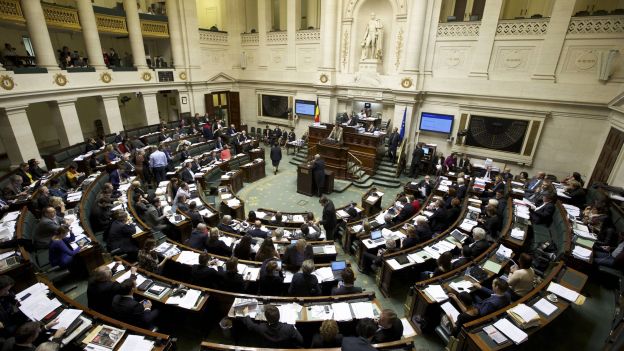
3. Session room of the Chamber of Representatives
From the peristyle, we now climb the green staircase on the right which takes us to the quarters of the Chamber of Representatives.
Before we reach the plenary hall, we pass by three committee rooms. Most parliamentary activities take place at committee level, and these rooms are where the action happens.
Walking further, we finally get to the plenary hall which is covered in green carpet just like the Chamber’s grand staircase. A sculpture of King Leopold I by Charles-Auguste Fraikin looks over the hall.
This was the room where 200 members of Belgium’s first national congress met in 1830 to draft a constitution. Since then, it has been the meeting room of the Chamber of Representatives.
In 1883, the session hall was completely destroyed in another fire. It was redesigned by Belgian architect Henri Beyaert and inaugurated by King Leopold II in 1886.
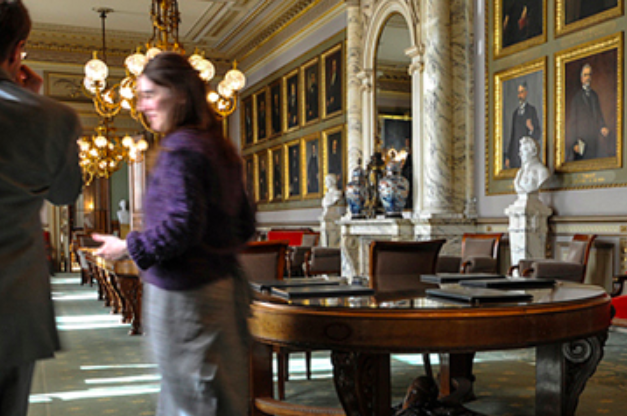
4. Reading room
We’ll skip the conference room, which is mostly for members of the press, and go straight to one of the oldest and most important rooms in the Palace of the Nation.
You are now standing in the exact place where the provisional government of Belgium held their meetings in 1830. Both sides of the reading room are adorned with busts representing members of Belgium’s first government.
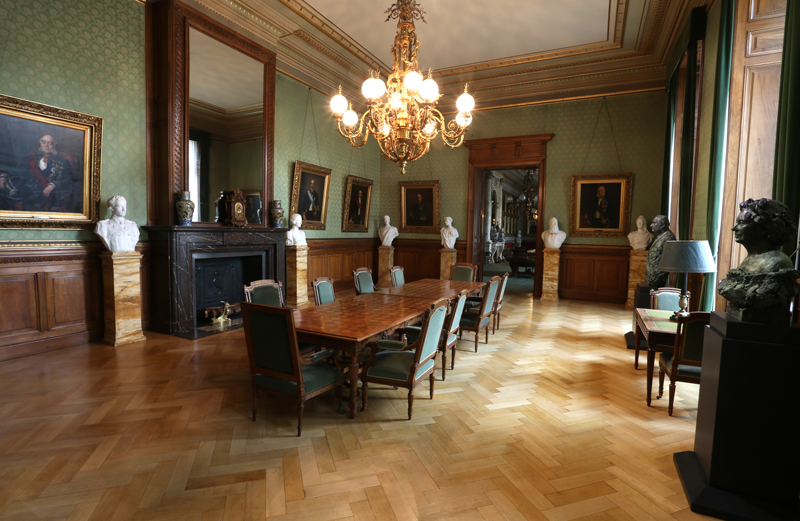
5. Green room
And now we leave the right wing and head toward the Senate’s side of the building.
Fortunately, we don’t have to go all the way down to the ground floor and mount the red stairs to get to the left wing. We can take a shortcut.
The green room is the only place in the palace which connects the Senate and the Chamber of Representatives. It’s also the only area of the Senate quarters that isn’t red.
Further along, we come face to face with the marble bust of Philippe, the Count of Flanders. He was the brother of King Leopold II and the father of King Albert I. If we took the red staircase going to the Senate, the bust would be the first thing to greet us on the landing.
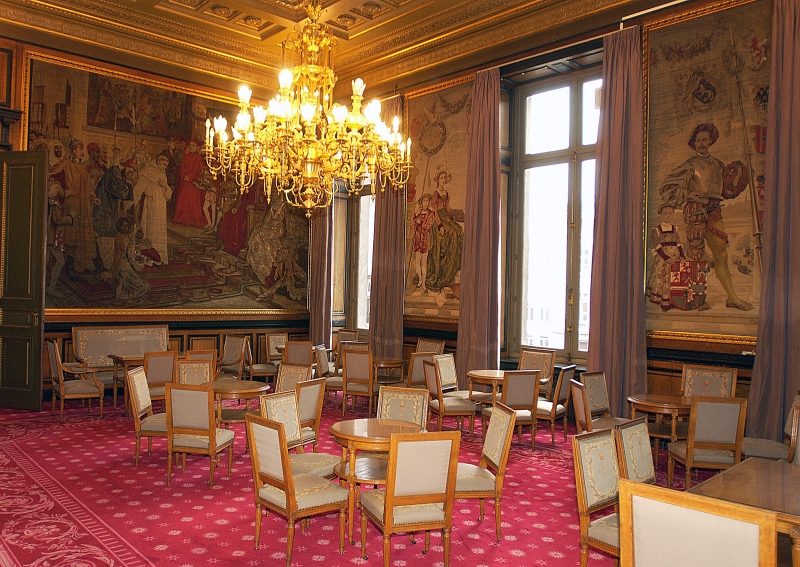
From the top of the stairs, a door to the right leads to the former smoking room of the senators. Here, tapestries made of silk and wool hang on the walls. They were created by Belgian painter Willem Geets in 1881.
Next to the old smoking room is the reading room which displays portraits of men who presided over the senate during the period between the two World Wars.

6. Session room of the Senate
We now set foot in the red-upholstered session room of the Senate. The walls are lined with paintings of historical figures and events from the Middle Ages to the 18th century.
If you turn your gaze upwards, you will see a gold ceiling emblazoned with the coat of arms of Belgium’s nine original provinces. The five chandeliers illuminating the plenary hall were especially designed for the place in 2000.
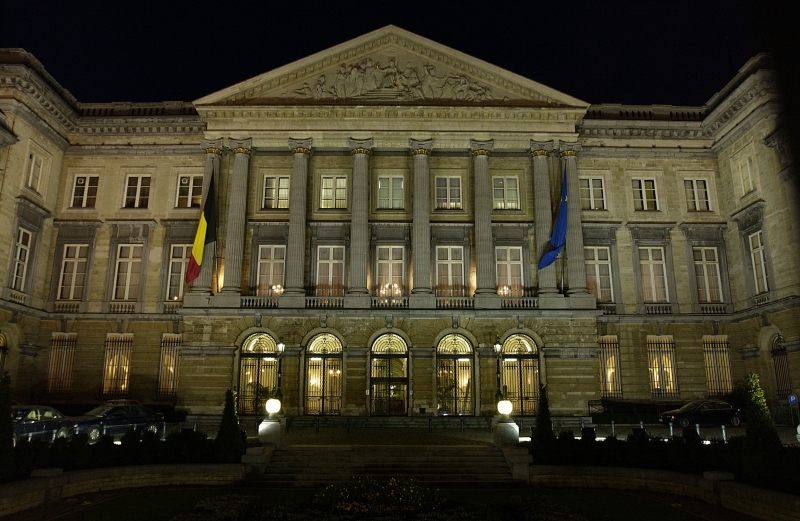
Belgium held its first general elections on August 29, 1831. Following the electoral system defined in the first constitution, 51 senators and 102 representatives were elected.
From a unitary government, Belgium slowly evolved into a federal state from 1970 to 1993. Today, the federal parliament is composed of 60 senators and 150 deputies.



